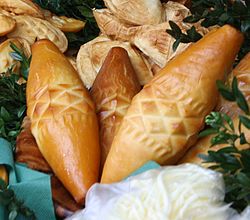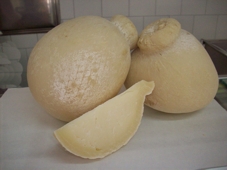It has been suggested that Pasta filata be merged into this article. (Discuss) Proposed since May 2025. |

This is a list of stretch-curd cheeses, comprising cheeses prepared using the pasta filata technique. The cheeses manufactured from this technique undergo a plasticising and kneading treatment of the fresh curd in hot water, which gives them fibrous structures. [1]













